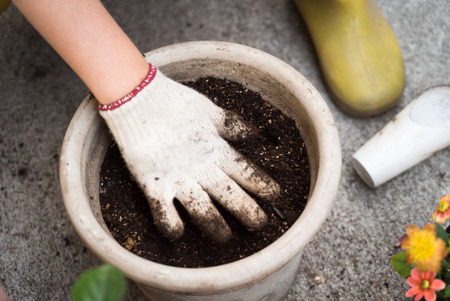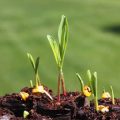Why Fall Mulching Matters
As the days grow shorter and the air turns crisp, fall is the perfect time for gardeners across the U.S. to give their plants a little extra care. Mulching in autumn does more than just tidy up your yard—it plays a crucial role in protecting your garden through the changing seasons. When you apply mulch in the fall, you’re giving your soil an insulating blanket that helps regulate temperature swings common in American climates. This insulation keeps plant roots warmer during sudden cold snaps and prevents soil from freezing too early. Plus, mulching locks in moisture from autumn rains, reducing the need for extra watering as the weather cools and water evaporates less quickly. One of the biggest headaches for any gardener—fall weeds—are also kept at bay with a fresh layer of mulch. By blocking sunlight and making it tough for weed seeds to sprout, mulch acts as a natural weed suppressant so you can spend less time pulling invaders next spring. In short, fall mulching isn’t just about aesthetics; it’s a smart strategy to set your plants up for a healthy rest over winter and a strong comeback when spring returns.
Choosing the Right Mulch Materials
When it comes to fall mulching, picking the right mulch can make all the difference in your garden’s health and appearance. In American home gardens, you’ll find both organic and inorganic mulch options at your local garden centers or home improvement stores. Each type has unique benefits and drawbacks, so it’s important to match your choice to your gardening goals and climate.
Organic Mulch Options
Organic mulches are made from natural materials that decompose over time, adding nutrients back into the soil. Here’s a handy comparison:
| Type | Pros | Cons |
|---|---|---|
| Shredded Bark/Wood Chips | Widely available, long-lasting, great for pathways and around trees/shrubs | May attract termites if placed near wood siding; can tie up nitrogen as it decomposes |
| Straw/Pine Straw | Lightweight, easy to spread, good for vegetable beds | Can blow away in windy areas; may contain weed seeds if not sourced carefully |
| Compost/Leaf Mold | Excellent soil enrichment, readily available from home compost piles | Breaks down quickly, so needs replenishing; may look messy in formal beds |
| Grass Clippings | Free if you mow your own lawn, high in nitrogen when fresh | Pile too thick and it may mat or smell; use only untreated grass to avoid herbicides/pesticides in your garden beds |
Inorganic Mulch Options
If you’re looking for something longer-lasting and less maintenance-intensive, inorganic mulches might be worth considering. Here’s what you’ll commonly find:
| Type | Pros | Cons |
|---|---|---|
| Landscape Fabric (Weed Barrier) | Excellent weed suppression, lets water through, reduces erosion on slopes | Needs covering with another mulch for looks; can restrict soil life if left exposed too long; weeds can still sprout above fabric if organic matter builds up on top |
| Gravel/Rock Mulch | Very low maintenance, doesn’t break down, good for xeriscaping and around heat-loving plants like succulents or cacti | No soil enrichment; can get very hot in full sun; heavier to install and remove if you want to change things up later |
| Rubber Mulch (Recycled Tires) | Long-lasting, excellent for playgrounds or paths where cushioning is needed, deters weeds well when applied thickly enough | No nutrient value; may leach chemicals over time; not suitable for edible gardens |
A Local Tip for American Gardens:
If you’re aiming for sustainability and cost-effectiveness, consider using what’s available locally—fall leaves make an excellent mulch when shredded. Many communities also offer free wood chips from municipal tree trimmings. By choosing a mulch that fits both your region’s climate and your garden’s needs, you’ll set yourself up for a healthier landscape through winter and into spring.
![]()
3. Step-by-Step Guide to Fall Mulching
Giving your garden a protective layer of mulch in the fall is one of the best ways to set your plants up for winter survival and minimize weeds come spring. Here’s a practical, family-friendly walkthrough you can follow:
When Is the Best Time to Mulch in Fall?
Wait until after the first light frost but before the ground freezes solid. This timing helps lock in soil moisture while also protecting plant roots from harsh winter temperatures.
How to Prepare Your Garden Beds
- Clear away debris: Remove fallen leaves, dead annuals, and any lingering weeds. A tidy bed helps prevent pests and diseases from overwintering.
- Water if needed: If it’s been dry, give your garden a deep watering before mulching to ensure roots head into winter well hydrated.
Selecting the Right Mulch
Choose organic mulches like shredded leaves, bark chips, pine needles, or straw. These materials break down over time, enriching your soil and providing insulation.
How Much Mulch Should You Use?
A 2–4 inch layer is ideal. Too thin won’t protect as well; too thick can suffocate roots or harbor rodents.
Application Steps
- Spread mulch evenly around plants and over bare soil, keeping it a few inches away from stems and trunks to prevent rot.
- Smooth the mulch with your hands or a rake, aiming for an even layer that covers all exposed earth.
- Check on your beds throughout late fall and winter—replenish mulch if wind or weather thins it out.
This simple fall ritual pays off big by insulating roots, preserving soil moisture, and blocking weed seeds—all with just an afternoon’s work. Your spring self will thank you!
4. Common Mulching Mistakes to Avoid
As you prepare your garden beds for the fall, it’s just as important to know what not to do as it is to follow best practices. Many well-intentioned gardeners make a few classic mulching mistakes that can actually harm their plants or encourage weeds rather than suppress them. Here’s how you can spot and sidestep these pitfalls in your U.S. garden this autumn:
Mulching Too Thickly
It might seem like more mulch means more protection, but piling it on too thick can suffocate roots, trap excess moisture, and invite rot or disease. Aim for a layer between 2-4 inches, depending on the material and your local climate.
Using the Wrong Mulch Materials
Not all mulch is created equal. For example, using fresh grass clippings or non-composted leaves can create a mat that repels water or fosters fungal growth. Stick with well-composted organic matter, shredded bark, or clean straw for most beds.
Piling Mulch Against Plant Stems (Mulch Volcanoes)
This common error happens when mulch is mounded up against tree trunks or plant stems. It can cause bark rot and attract pests. Always leave a small gap—about an inch—around the base of each plant.
Ignoring Weed Seeds in Mulch
If you use homemade compost or yard waste, make sure it’s fully decomposed and weed-free before applying it as mulch. Otherwise, you might unintentionally introduce new weeds right into your garden beds.
Quick Reference: Mulching Dos and Don’ts
| Do | Don’t |
|---|---|
| Apply 2–4 inches of mulch | Smother plants with thick layers |
| Use well-composted organic materials | Use fresh grass or unshredded leaves |
| Keep mulch away from stems/trunks | Pile mulch directly against plants (“mulch volcanoes”) |
| Check for weed seeds in homemade mulch | Add unfinished compost that may contain weed seeds |
Avoiding these simple mistakes will help ensure that your fall mulching efforts truly benefit your garden—protecting your plants and keeping weeds at bay through the colder months.
5. Reap the Rewards: Maintaining and Monitoring Mulch
Once you’ve tucked your garden in with a cozy layer of fall mulch, it’s tempting to forget about it until spring. But to truly protect your plants and keep weeds at bay, ongoing care is key. Here are some practical tips for monitoring your mulch throughout the winter months and making sure your garden wakes up healthy when the weather warms.
Check Mulch Depth Regularly
After a few autumn storms or gusty winds, take a walk through your yard to see if any areas have thinned out. Ideally, maintain a mulch depth of 2-4 inches—deep enough to insulate roots but not so thick that it smothers them. Add more mulch as needed, especially around the base of sensitive plants, but be careful not to pile it directly against stems or trunks to avoid rot.
Watch for Excess Moisture
While mulch is great at retaining moisture, too much water can cause problems like mold or root rot. If you notice soggy spots or a musty smell, gently rake back the mulch in those areas to let the soil breathe. This is particularly important during mild winters when rain is more common than snow.
Keep an Eye Out for Pests
Mulch creates a warm haven not just for plant roots, but sometimes for critters like voles or slugs. Check under the mulch occasionally for signs of pests—chewed stems, tunnels, or droppings. If you find troublemakers, adjust your mulching technique by thinning out layers near plant crowns or switching to less pest-friendly materials like cedar chips.
Adjust as Needed Through Winter
Winter weather can be unpredictable. If you get a sudden freeze after a thaw, lightly fluff compacted mulch to prevent ice crusts from forming over plant crowns. In regions with heavy snowfall, check that mulch hasn’t shifted away from vulnerable perennials after each melt.
Spring Forward: Prepare for Growth
As temperatures rise and days get longer, start pulling back mulch from emerging shoots to give them space and sunlight. Now’s also the time to refresh thin spots and tidy up edges for that neat, cared-for look. With these simple steps, your fall mulching efforts will pay off—keeping weeds down and giving your plants the best possible start when spring arrives.


